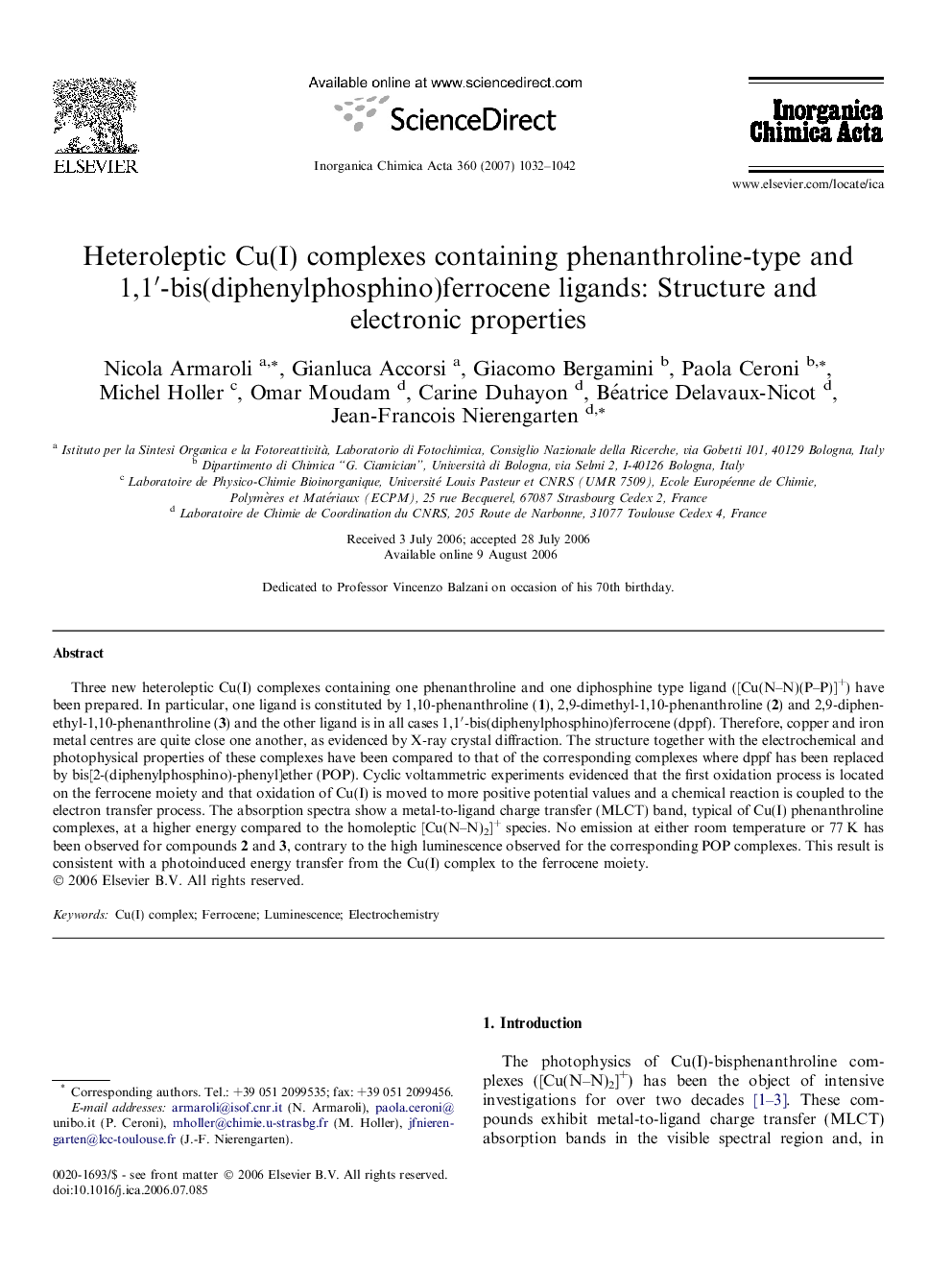| Article ID | Journal | Published Year | Pages | File Type |
|---|---|---|---|---|
| 1312783 | Inorganica Chimica Acta | 2007 | 11 Pages |
Three new heteroleptic Cu(I) complexes containing one phenanthroline and one diphosphine type ligand ([Cu(N–N)(P–P)]+) have been prepared. In particular, one ligand is constituted by 1,10-phenanthroline (1), 2,9-dimethyl-1,10-phenanthroline (2) and 2,9-diphenethyl-1,10-phenanthroline (3) and the other ligand is in all cases 1,1′-bis(diphenylphosphino)ferrocene (dppf). Therefore, copper and iron metal centres are quite close one another, as evidenced by X-ray crystal diffraction. The structure together with the electrochemical and photophysical properties of these complexes have been compared to that of the corresponding complexes where dppf has been replaced by bis[2-(diphenylphosphino)-phenyl]ether (POP). Cyclic voltammetric experiments evidenced that the first oxidation process is located on the ferrocene moiety and that oxidation of Cu(I) is moved to more positive potential values and a chemical reaction is coupled to the electron transfer process. The absorption spectra show a metal-to-ligand charge transfer (MLCT) band, typical of Cu(I) phenanthroline complexes, at a higher energy compared to the homoleptic [Cu(N–N)2]+ species. No emission at either room temperature or 77 K has been observed for compounds 2 and 3, contrary to the high luminescence observed for the corresponding POP complexes. This result is consistent with a photoinduced energy transfer from the Cu(I) complex to the ferrocene moiety.
Graphical abstractThe intense photoluminescence from MLCT Cu(I) complexes is strongly quenched in the presence of a ferrocene unit by the intramolecular energy transfer process.Figure optionsDownload full-size imageDownload as PowerPoint slide
